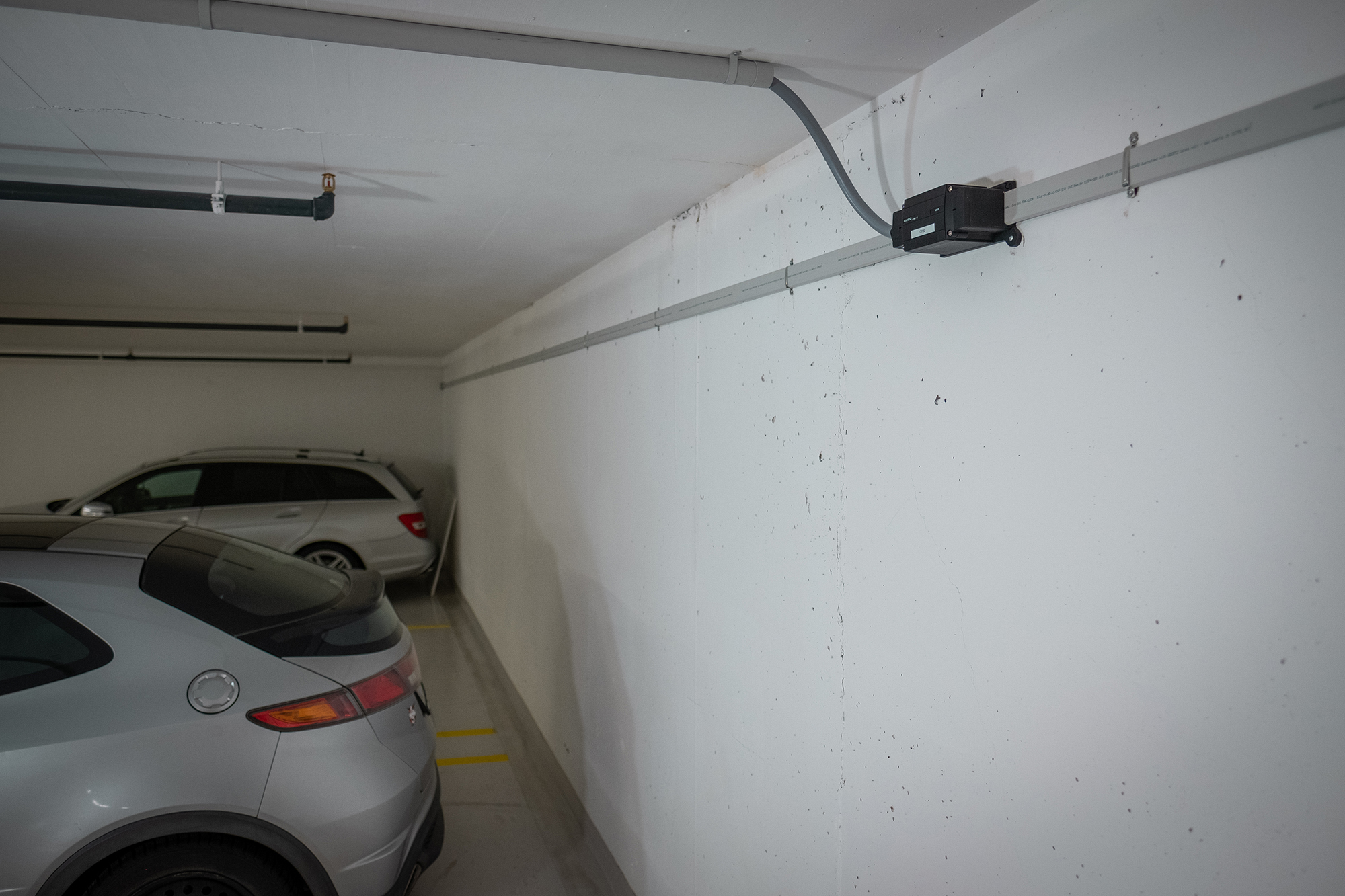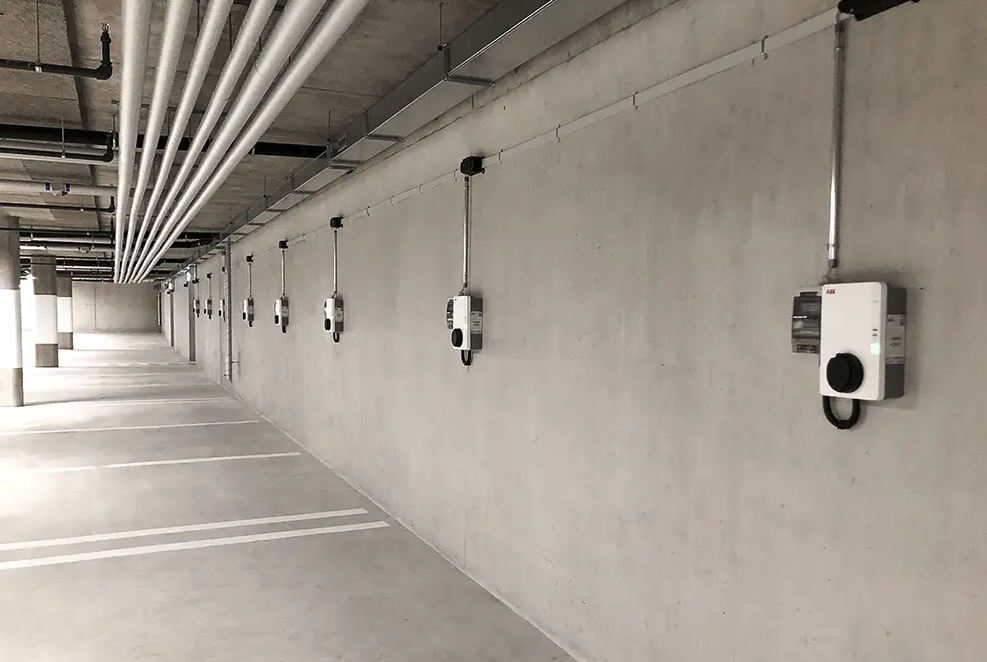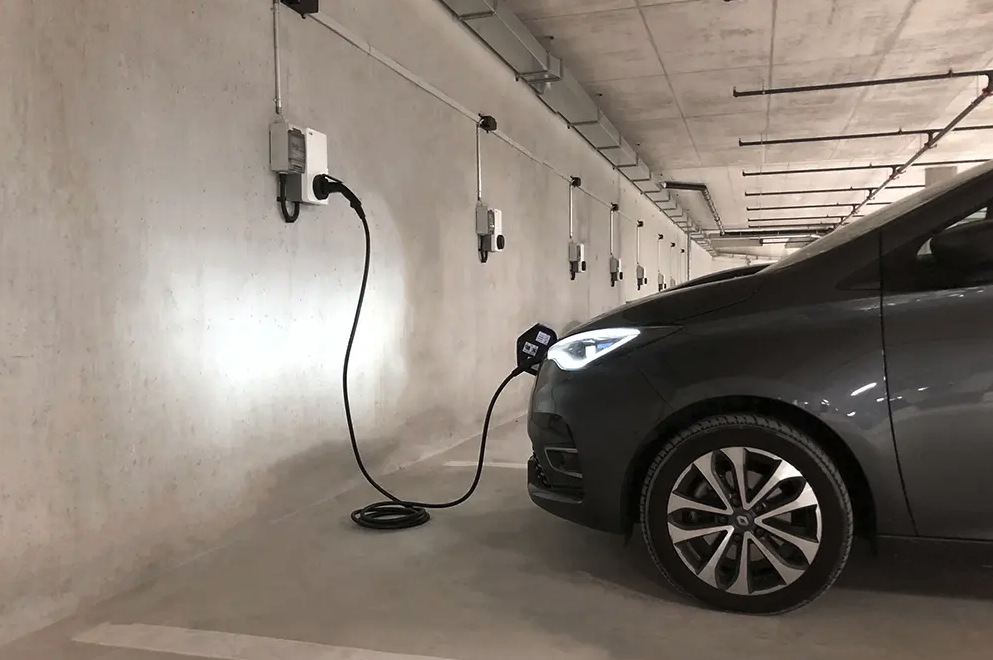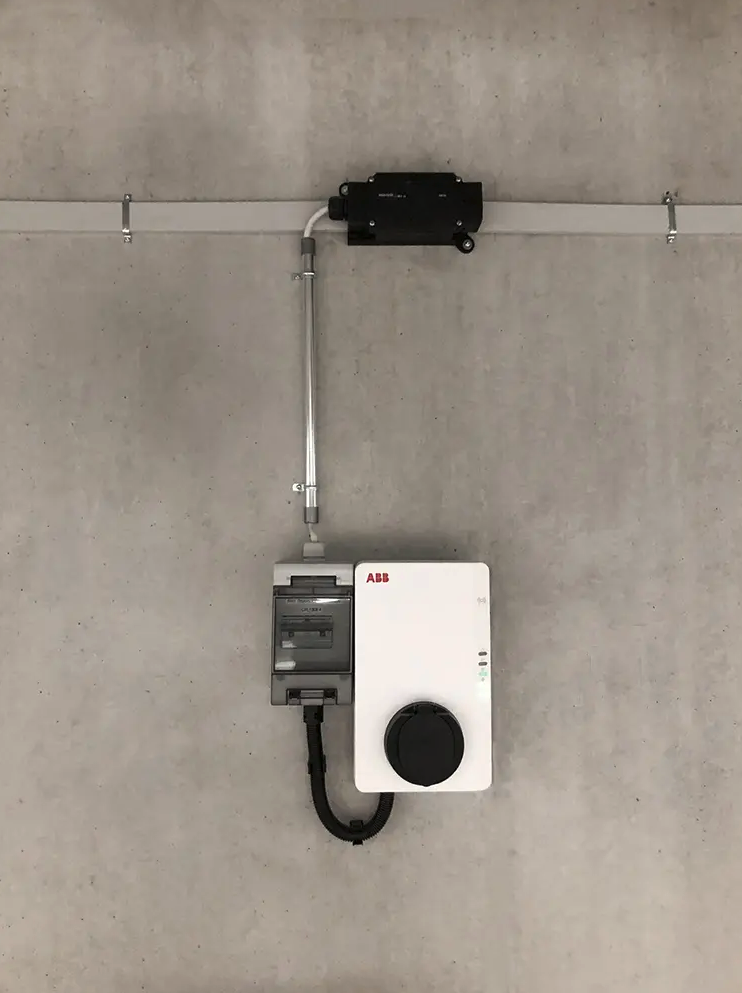Virtual assistant
Installer
Getting Started Guide
Solutions and documentation structure
Equipment ordering and commissioning
General terms and conditions of sale and warranty
Wiring diagrams
Gateway and communication
Community - Electricity Metering - RCP
Heating - Heating metering and water
Mobility - EV Charging Stations
EBike - Recharge electric bikes
Washaccess - Collective laundry manager
Self-consumption optimization
Building energy monitoring
Equipment and installation
Charging infrastructure and relays
Metering infrastructure
Communication infrastructure
Climkit Gateway
4G Router
LAN Router
RS485-Ethernet Converter
Switch ethernet DIN POE
WiFi Network
MBus-RS485 Converter
Storage system (battery)
Configuration and commissioning
Commissioning
Getting Started Guide
Add a router to a site
Add a Climkit Gateway to a site
Electricity meter configuration
Charging station configuration
Configuration of heating and water meters (MBus)
Installation of Shelly relay meters
Optimization via EV relays and charging stations
Checking meter connection status
Advanced configuration
Configuration Gateway
RFID reader and relay meter configuration
IP network configuration and routers
RS485-Ethernet TCP/IP Converters
Configure Teltonika RUT241
Display configuration
Modbus Meter Configuration
Metering data processing
Manually read meter
Inepro PRO380 Meters and various
ABB Terra AC Charging Station Configuration
Wallbox configuration
Firewall rules for Climkit Gateway
Schneider EVlink Pro AC Charging Station Configuration
Zaptec Charging Station Configuration
Owner
Administrative setup
Getting started guide - administrative setup
Form - 1. Contact details
Form - 2. Solutions
Form - 3. Rates
Contract and documents to complete
Owner account
Consumer information flyers
Online access, RFID badge and charging stations
FAQ and other information
Resident
Platform
Platform access
Terminology
Site
Parameters
Creation/edit of a note or to-do item
Closing an open issue
Site statuses
Add/Modify building(s)
The steps for setting up a site
Delete/deactivate a site
Add/Edit Equipment(s)
Modify site basic information
Equipment
Add/modify a gateway
Add/modify a router
Add/modify an electricity meter
Bulk meter insertion
Mass assigning meters to a gateway
Add/edit a distribution zone
Add/modify a charging station
Add/modify a thermal or water meter
Add/edit a DSO meter (FTP transfer)
Remote connection to a Climkit gateway
Administration
Stakeholders
Financial conditions
Visualizing Site Management Conditions
Activating/Deactivating a Solution
Configuration of the Operating Method
Visualizing Financial Conditions
Creation/editing/addition of a financial condition
Removal of a financial condition
Accounts
Create a consumer account
Create a contact
View and download account invoices
Send platform access to a contact
Add/modify billing address
Link an existing account to a site
Changing the correspondence method
Rates and billing points
Creating/editing a billing point
Register a move (relocation)
Account assignment to a billing point
Add/edit default charge advance payment for a billing point
View site consumption rates
Consumption Rate Edition
Creation/editing of a consumption tariff
Creation/editing of a Tariff component
View fixed rates and subscriptions
Customize invoice position labels/titles
View Financial conditions billed at billing points
RFID badges
Accounting
Tools
Meter control
Visualization
Expense accounts
Introduction to the Expense Statement Tool
Create/edit an expense accounting period
Modify expense statement settings
Add/edit a overhead expense invoice on an expense statement
Edit collected advance payments of an expense statement
Specifics of heating and hot water production costs
Check and download meter readings for the cost accounting period
Allocate expenses and generate expense statements
Exporting individual consumptions for the billing period
API
- Categories
- Installer
- Wiring diagrams
- Mobility - EV Charging Stations
Mobility - EV Charging Stations
1. Standard Wiring Diagram
The Climkit Mobility system involves the installation of smart charging stations that communicate with the Climkit Gateway via the OCPP protocol.
Through this communication and the installation of continuously read meters, the Climkit Gateway can regulate the available power allocated to the charging stations and also manage user access, where users identify themselves via RFID badges.
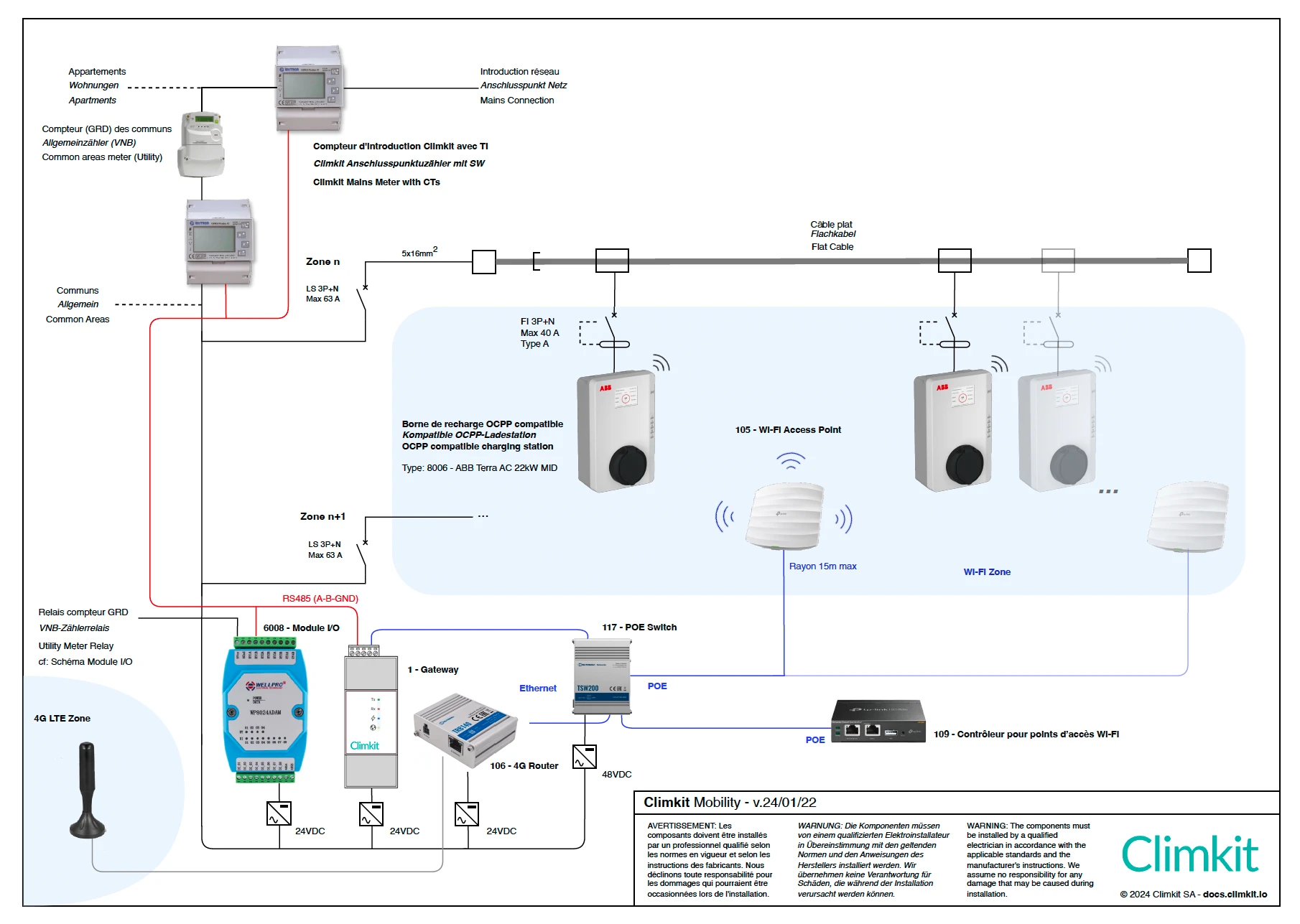
Wiring in an RCP
In a Climkit RCP (see Community - Electricity Metering - RCP), a meter is installed on each distribution zone feeder (flat cable). This meter is never installed behind the common area meter.
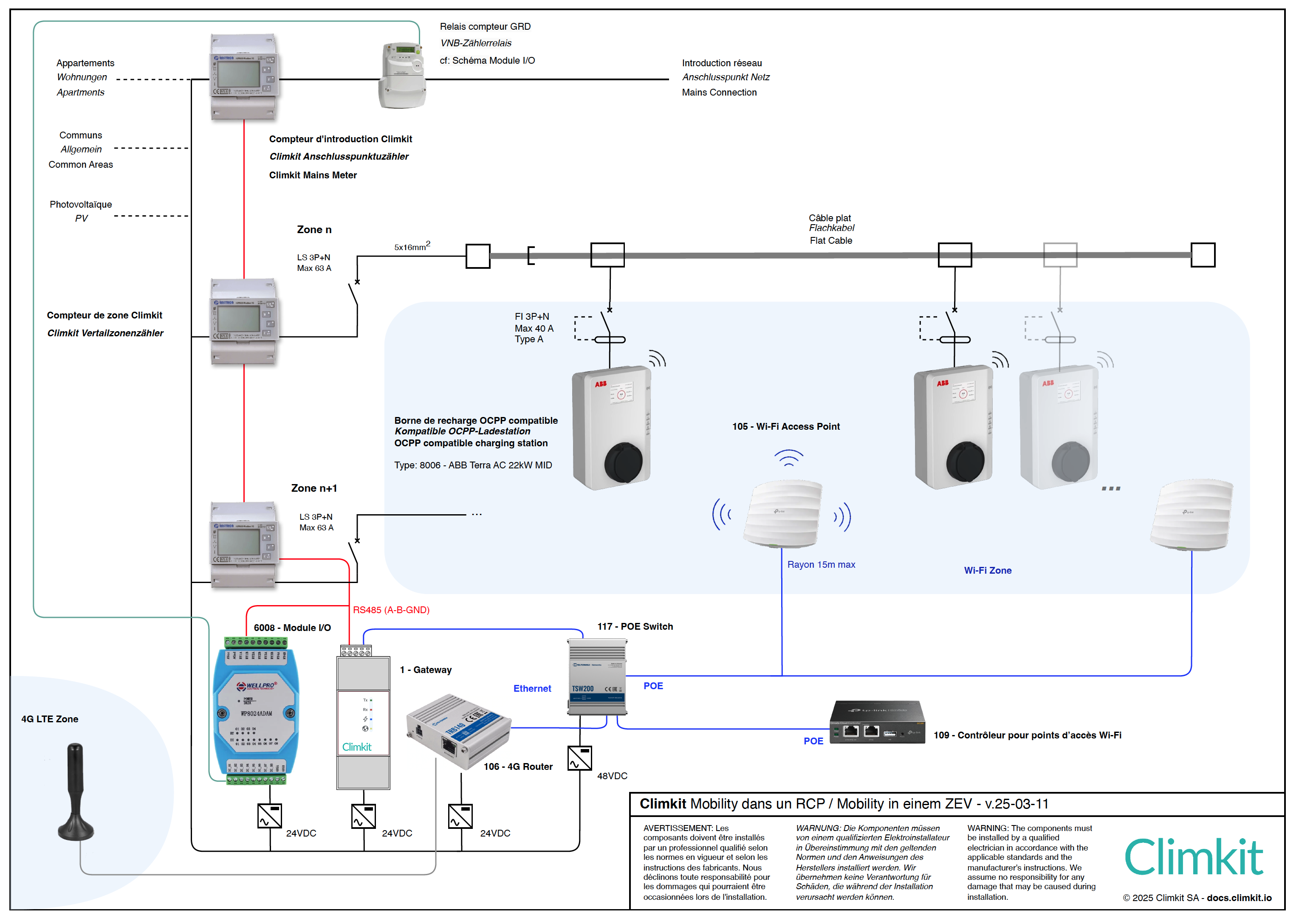
Wiring of the I/O Module
The I/O Module is used to detect a command from the DSO meter for load shedding of the charging stations.
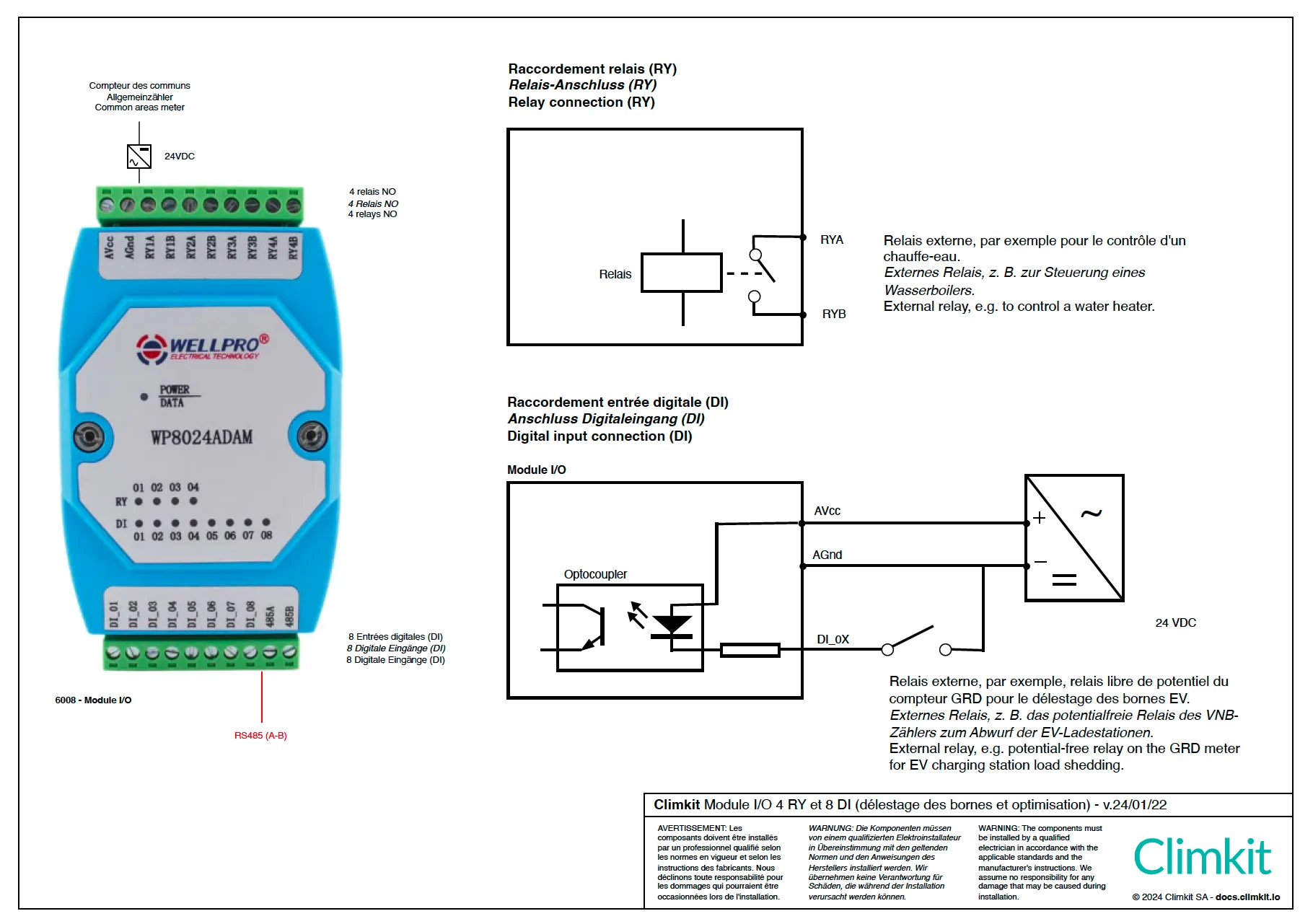
2. Wiring Diagram - One Parking Lot and Multiple Feeds
When multiple power feeds are available for the same parking lot, each flat cable feeder (63A) is taken from one of the feeds.
Only one gateway and one 4G router are needed. Power regulation control meters are connected to the gateway via an RS485 bus or IP-Ethernet using RS485-Ethernet converters.
Option A: Charging station feeds from the common area DSO meter
In the diagram below, there are 2 flat cable feeds taken behind the common area meter of each building.
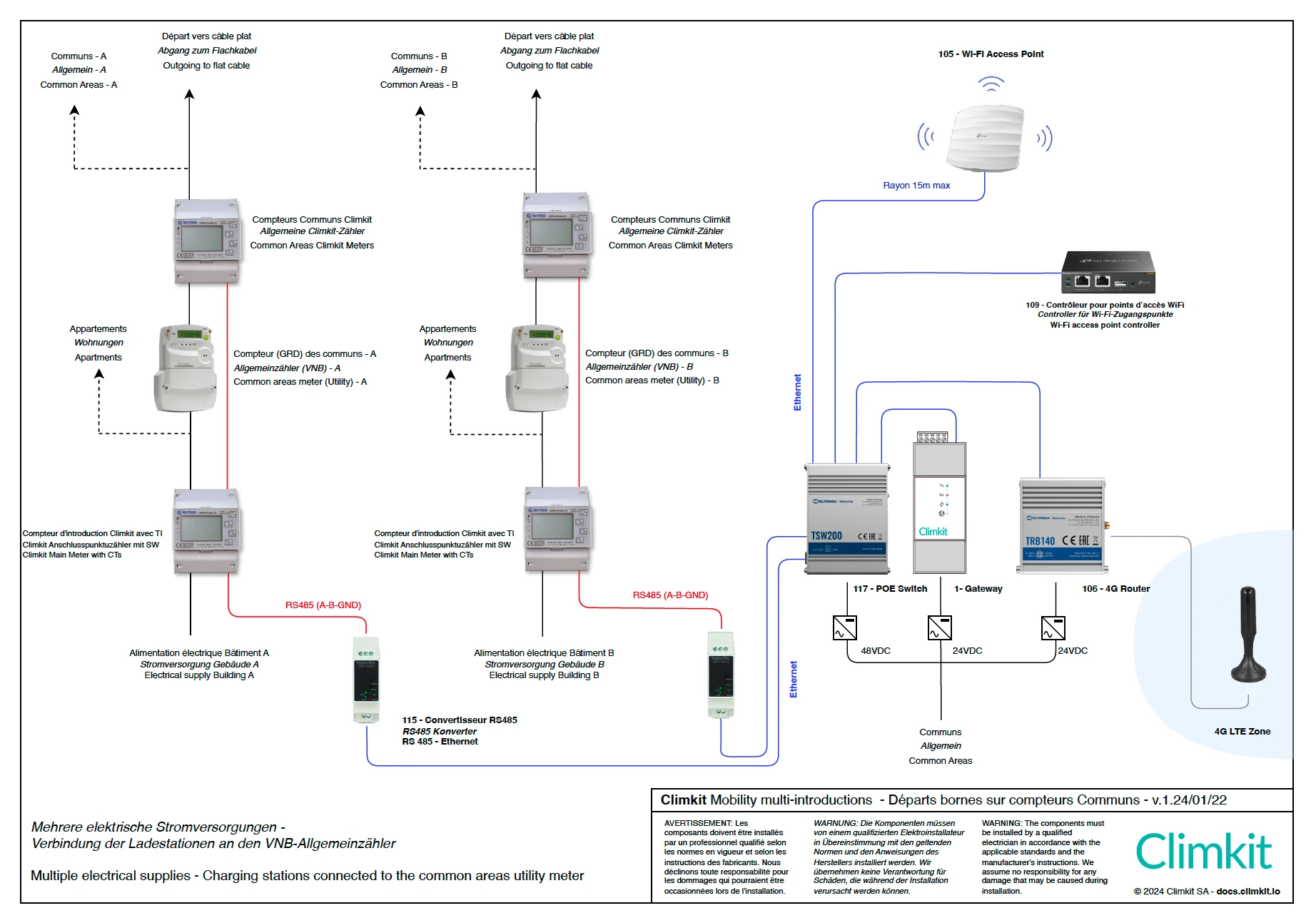
Option B: Charging station feeds from a dedicated DSO meter
In the diagram below, there are 2 flat cable feeds taken behind a dedicated DSO meter for the charging stations for each building. Therefore, it is not necessary to install a Climkit meter on the common area feed.
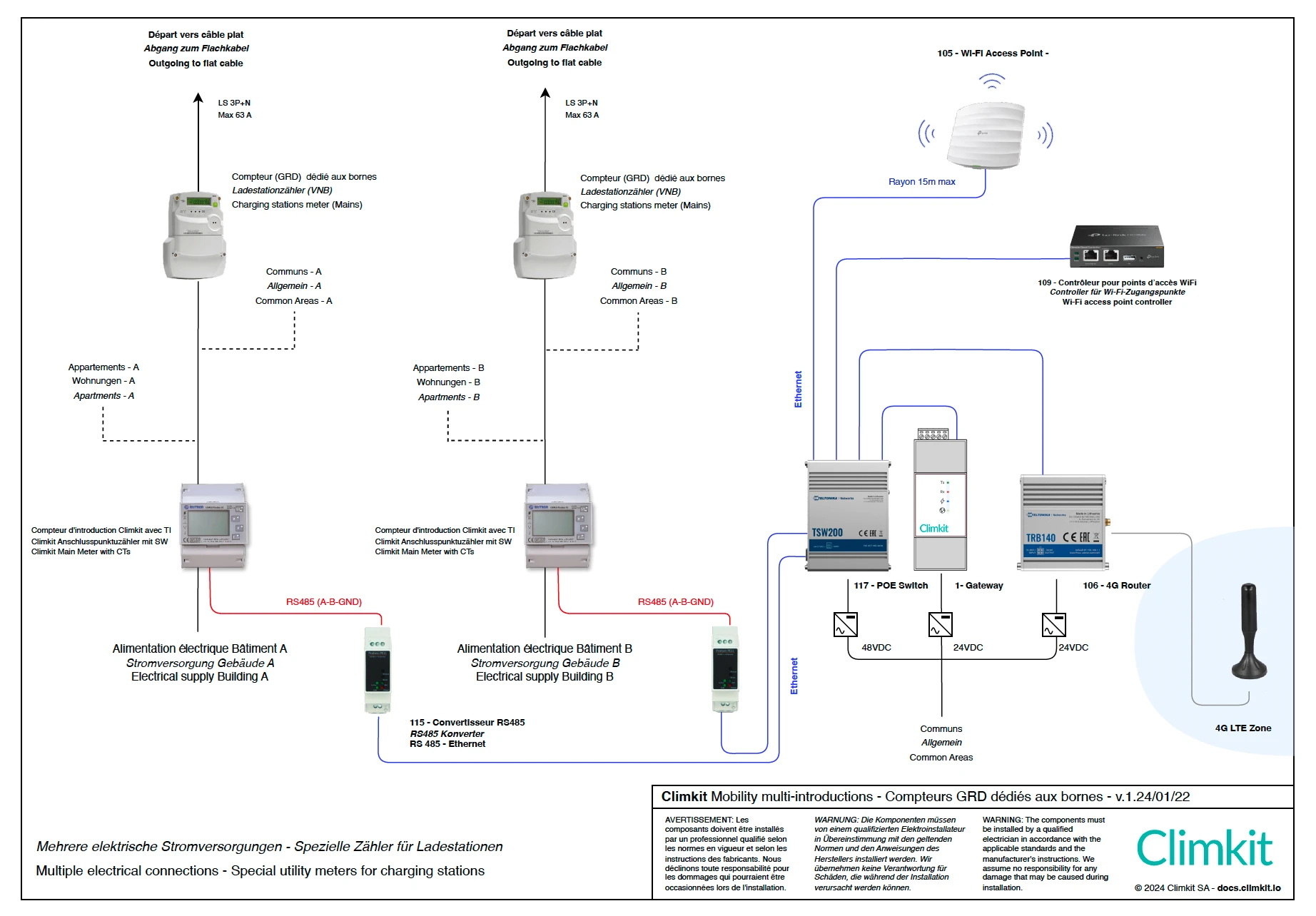
3. Flat Cable in Collective Parking Lots
For small installations, the few charging stations can be individually connected to the building's electrical panel and connected via Ethernet or Wi-Fi.
However, for larger parking lots, it is recommended to install a flat cable to bring electricity to each parking space, thus facilitating the installation of a charging station as residents wish to equip themselves.
This is what SIA 2060 level C1 recommends.

We recommend installing a 5x16mm2 flat cable from Woertz or Wieland along the parking spaces to be equipped.
The cable is fixed directly to the wall or ceiling with clamps.
Thanks to IP65 junction boxes with insulation piercing connections, the charging stations are then easily connected without cutting or stripping the cable.
The flat cable is powered via a 3P+N circuit breaker of max 63A from the electrical panel (provided by the electrician installer).
Although the number of charging stations per zone is unlimited, it is recommended not to connect more than 30.
Each charging station is then equipped with a 16A (11 kW) to 32A (22 kW) Type A RCD and connects to the management system via Wi-Fi.
Flat Cable Installation Example
